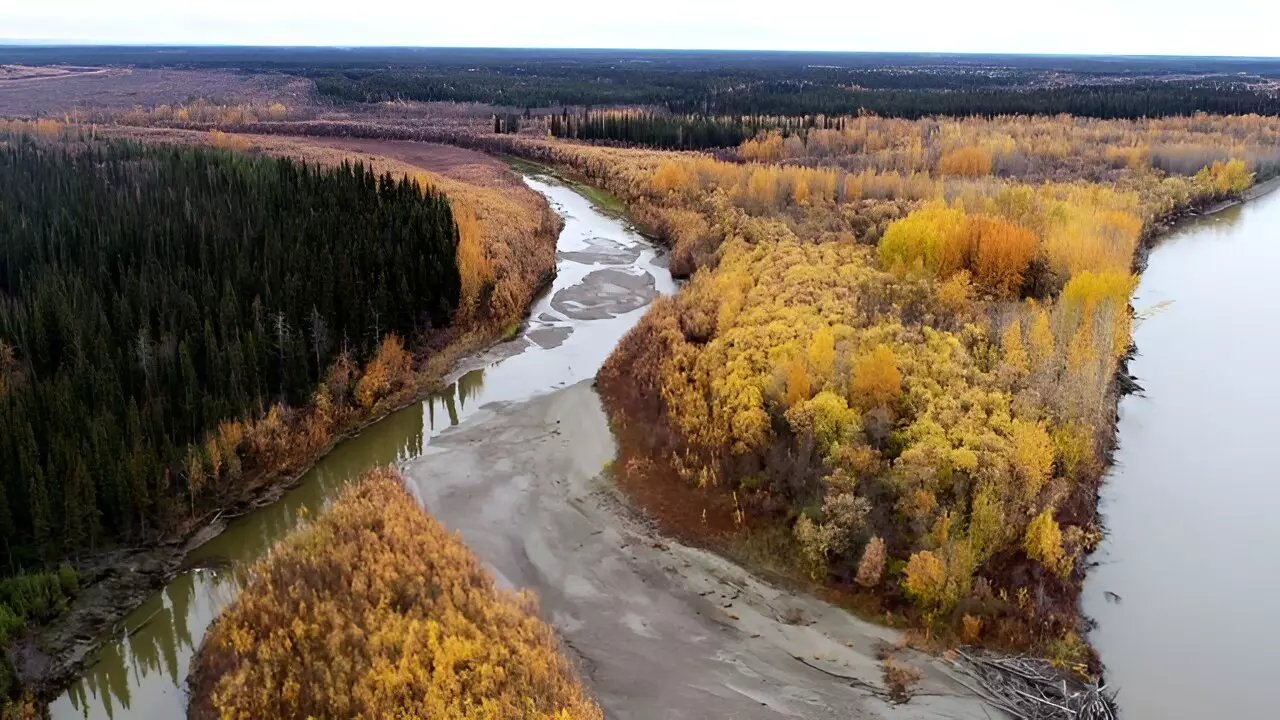The Arctic region, known for its stark beauty and harsh conditions, is undergoing an alarming transformation due to climate change. Among the many issues that arise from this warming is the release of mercury, a highly toxic element that has been trapped in Arctic permafrost for thousands of years. Recent research sheds light on the extent of this problem while also providing a more precise way to measure mercury levels in the environment. This article delves into the implications of these findings for Arctic communities and the broader ecosystem.
As the Yukon River flows across Alaska toward the Bering Sea, it interacts with the eroding permafrost along its banks. This natural process not only reshapes the river’s course but also releases mercury long thought to be securely locked in the frozen ground. As Arctic temperatures rise—up to four times faster than the global average—scientists are increasingly concerned that the melting permafrost could unleash a “mercury bomb.” A study released by researchers at USC Dornsife indicates that this release poses a significant environmental threat to the estimated 5 million people living in the Arctic, many of whom rely on the land and water for their subsistence.
Mercury, a potent neurotoxin, has a complex journey through the ecosystem. According to Josh West, a professor at USC Dornsife, atmospheric conditions propel pollutants toward the Arctic, exacerbating mercury accumulation in the region. Over millennia, plants absorb mercury from the environment, which then becomes part of the soil once these plants die. As the permafrost thaws, this accumulated mercury can leach into water systems, where it poses serious health risks to wildlife and humans alike.
The USC Dornsife research team has introduced a new and accurate method for measuring mercury concentrations in riverbank sediments compared to traditional approaches that focused solely on the top layers of permafrost. By analyzing sediment samples from deeper soil layers at various locations along the Yukon River, they were able to provide a more comprehensive perspective on mercury levels. This innovation is crucial since the previous methodology was inconsistent and could underestimate the true amount of mercury present.
The study was conducted in strategic locations around two Alaskan villages, Beaver and Huslia, to gauge the effects of sediment erosion and redeposition in the river. Their findings indicate that mercury levels in sediments align closely with higher estimates from earlier studies, validating their new approach. This deeper understanding of sediments not only improves assessment accuracy but also highlights specific areas that may pose greater risks due to the type of soil present.
One complexity of this issue lies in the dynamic nature of the river itself. Researchers have utilized remote sensing data to track the changing course of the Yukon River and its effects on sediment movement. As the river meanders, it can erode mercury-laden sediments from its banks and redeposit them on sandbars, creating a multifaceted scenario that complicates risk assessment.
Isabel Smith, the study’s lead author, emphasizes the importance of understanding both erosion and reburial processes. While the river’s erosion may initially release mercury into the environment, its subsequent deposition can mitigate some risks by “reburying” these sediments. This refreshing perspective prompts a deeper inquiry into how these processes interact and affect mercury exposure for local communities and ecosystems.
Although current levels of mercury released from thawing permafrost may not constitute an immediate health crisis, the long-term effects could be catastrophic, especially for indigenous communities reliant on hunting and fishing. Mercury bioaccumulates in the food chain, particularly affecting fish and wildlife consumed by local inhabitants. The build-up of mercury over decades could severely impact the health and livelihoods of Arctic residents.
Additionally, while drinking water contamination appears to be less of a concern compared to dietary exposure, the cumulative exposure to mercury could lead to significant health issues over time. The medical and social implications tied to contaminated diets are not easily quantifiable, yet their potential impact on the wellbeing of Arctic communities is profound.
The researchers from USC Dornsife hope that their refined methodologies will pave the way for more precise assessments of the hazards posed by thawed permafrost. With the potential for a looming “mercury bomb,” proactive measures are vital. Awareness and understanding of mercury dynamics can assist in developing strategies to minimize risks and safeguard the health of Arctic communities.
As climate change continues to disrupt the delicate equilibrium of the Arctic ecosystem, the implications of mercury release from permafrost underscore the need for urgent attention and coordinated research efforts. Addressing these challenges will be crucial not only for environmental sustainability but also for the health and prosperity of those who call the Arctic home.


Leave a Reply